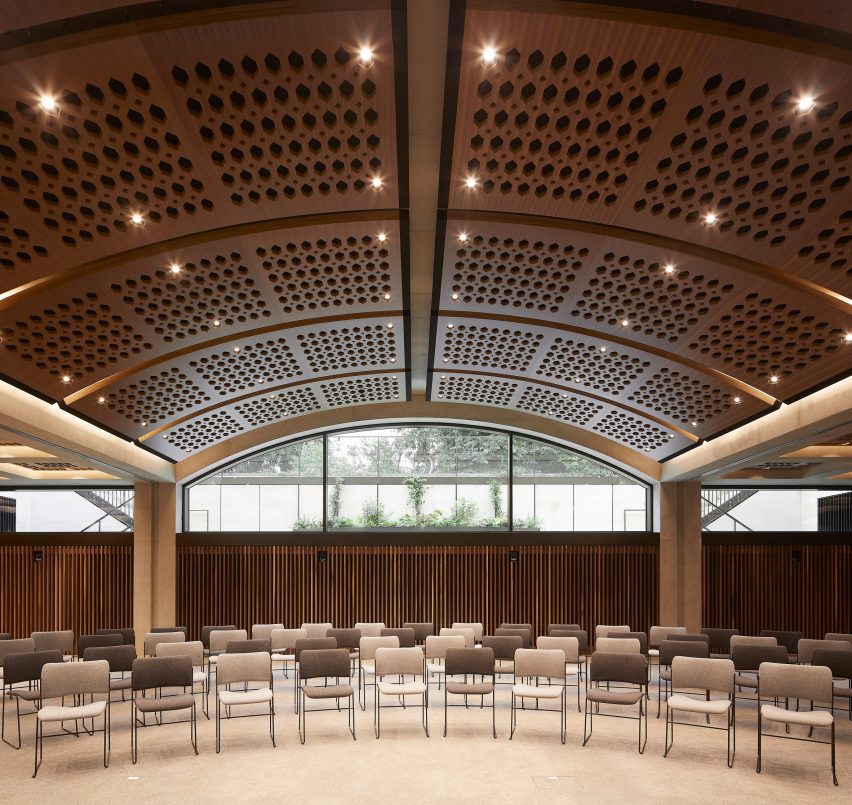
Stanton Williams updates historic home of the Rhodes Trust in Oxford
British architecture studio Stanton Williams has refurbished and extended the Grade II*-listed Rhodes House at the University of Oxford, adding a lantern-like glazed pavilion for events.
Originally designed by architect Herbert Baker and completed in 1929, Rhodes House has historically housed events, accommodation and archive spaces, set amid landscaped gardens in Oxford's city centre.
Tasked with doubling the usable space of the site as well as bringing its environmental performance up to modern standards, Stanton Williams reconfigured the building's layout while retaining its historic character.

"The spatial and environmental performance of Rhodes House no longer met the needs of its host organisation," Stanton Williams associate Tom Fotheringham told Dezeen.
"To allow the Trust to evolve while remaining within its historic premises, we had to find ways to double Rhodes House's usable space and provide new conference facilities, new working accommodation for staff and scholars, and new residential uses," he added.
In the biggest alteration to the site, a previously restricted archive space on the lower ground floor has been converted into a 300-seat conference hall and foyer, accessed via a newly created spiral stone staircase in the Rotunda and illuminated by high-level windows.

Forming a new "sculpture" at the main entrance of Rhodes House, the post-tensioned stone stair was developed with Webb Yates Engineers, and features a carved pattern that references the hexagonal tiling of the original floor.
This hexagonal pattern was also used as a motif in the conference hall itself, where a vaulted ceiling has been clad with wooden panelling.

"The new sculptural stone staircase complements the existing Rotunda, fulfilling Herbert Baker's ambition that a sculpture should be installed to help this space become 'the centre of beauty and interest in the building'," Fotheringham told Dezeen.
The building's western wing houses staff and scholar working accommodation, while the eastern wing holds 21 ensuite rooms for conference delegates, and has been extended with a new brick block providing 16 further bedrooms overlooking a residential courtyard.
"The new residential courtyard within the East Garden is placed below ground to preserve key views between the existing building and the Civil War Rampart on the site boundary," explained Fotheringham.
"It has been designed as a sunken volume within the garden, with chamfered soffits and piers around the perimeter to maximise daylight and provide privacy for the bedrooms below," he told Dezeen.

In the west garden, Stanton Williams has inserted a glass pavilion providing space for events, with a flexible, 50-seat space beneath a sweeping wooden roof.
Intended as a "solar collector", the pavilion collects heat from the sun and redistributes it through the main building for heating and hot water, while fan-coil units keep the pavilion itself comfortable.

Other projects recently completed by Stanton Williams include a new academic building for University College London in the Queen Elizabeth Olympic Park, which is clad in textured concrete panels.
The photography is courtesy of Stanton Williams.